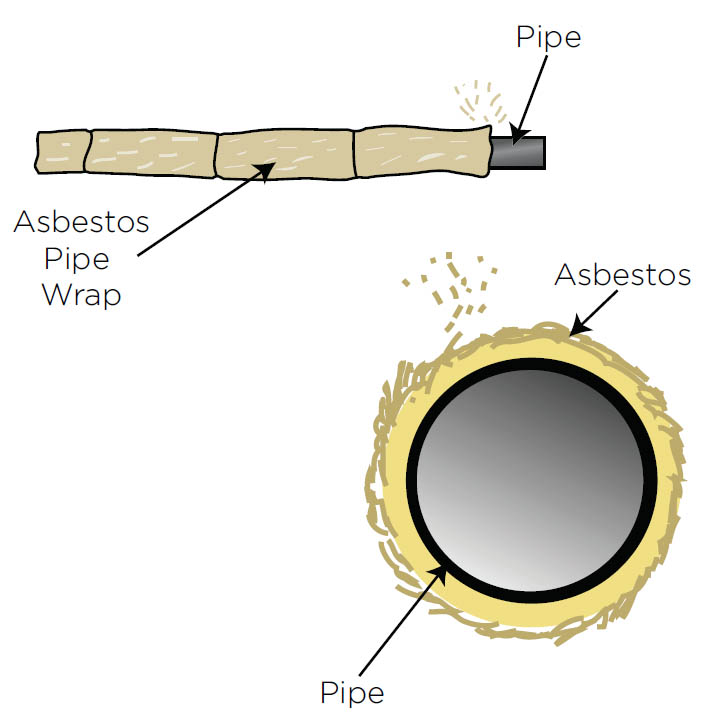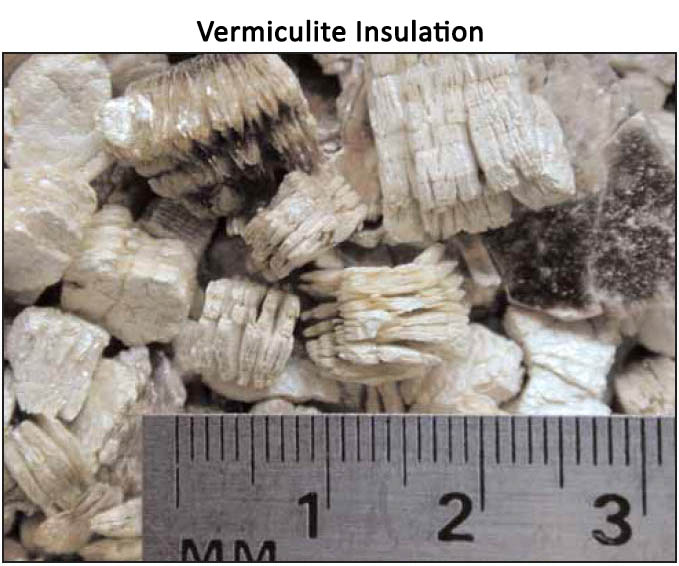
Asbestos in the Home
Dec 5, 2019
Dec 4 2019 | from Pillar to Post
Asbestos is the name given to a group of fibrous minerals possessing useful properties, including thermal stability, strength, and good insulating abilities. Asbestos has been used in many products, from automobile brake pads to thermal insulation. Today we realize that asbestos could pose a health risk. Asbestos use has been phased out over the years. Still, there are products that may contain asbestos, particularly in older homes.
 In the home, asbestos may be found in the following:
In the home, asbestos may be found in the following:
• Vermiculite thermal insulation in attics and walls
• Insulation in walls and ceilings
• Pipe wrap for hot water heating systems
• Thermal insulation on heating ducts and heating systems
• Acoustic ceiling tiles
• Stipple paint, spray coatings, patching and joint compounds
• Resilient flooring (vinyl floor tiles, etc.)
• Roofing felts
• Asbestos cement roof tiles
• Asbestos cement siding
• Door gaskets on furnaces, boilers, and wood stoves
What’s the Problem?
Asbestos poses a health risk when the fibers become airborne. Breathing asbestos fibers can lead to asbestosis,lung cancer and mesothelioma. Most people who get asbestosis have been exposed to high levels of asbestos over a long period of time. Symptoms may develop for many years after exposure.
 Today occupational exposure is carefully controlled, and the use of asbestos in products has been dramatically reduced. The products that contain asbestos are better designed to encapsulate the asbestos fibers, preventing them from being released into the environment.
Today occupational exposure is carefully controlled, and the use of asbestos in products has been dramatically reduced. The products that contain asbestos are better designed to encapsulate the asbestos fibers, preventing them from being released into the environment.
The Risk in Your Home
While most people exposed to small amounts of asbestos do not develop any health problems, a prudent avoidance protocol is best. If you know what contains asbestos in your home, you can take steps to avoid significant and prolonged exposure.
The biggest risk is attempting to remediate on your own. Disturbing asbestos usually makes it become dangerous to your health. In most cases, the best course of action is to leave the asbestos-containing material alone. If it must be removed, it’s a job for an expert.
Identification
If you suspect that materials in your home contain asbestos, you can have them tested. It is not possible to confirm whether a material contains asbestos from a visual inspection. Microscopic examination is required. An expert is required to do the sampling and identification.
What Can You Do About Asbestos?
First and foremost, remediation should be done by an expert. If the asbestos is in good condition, the best course of action may be to leave the material alone. Asbestos is only a health risk if it is crumbling and damaged. If it shows minor localized damage, it can be repaired by sealing the asbestos fibers with a sealant that sticks the fibers together. This process is called encapsulation.
Removing asbestos is possible but expensive. In some cases, removal is the only option, such as during renovations.

